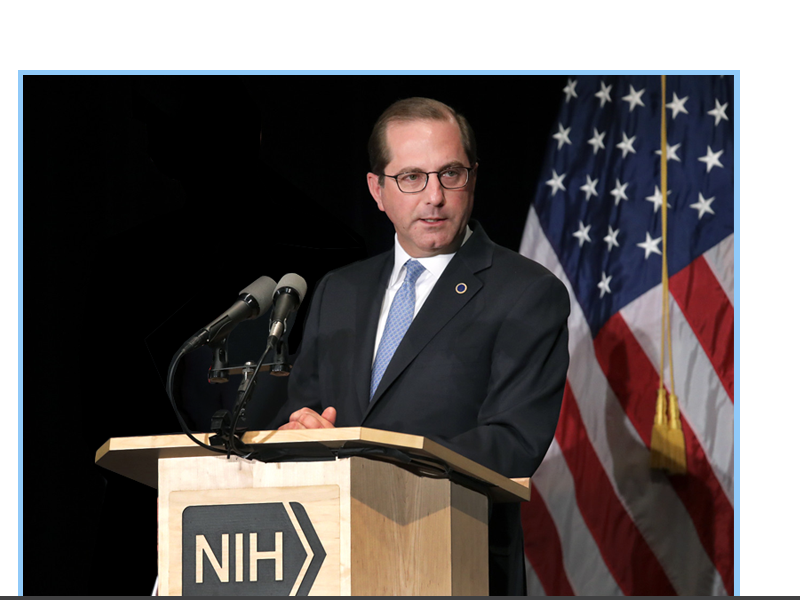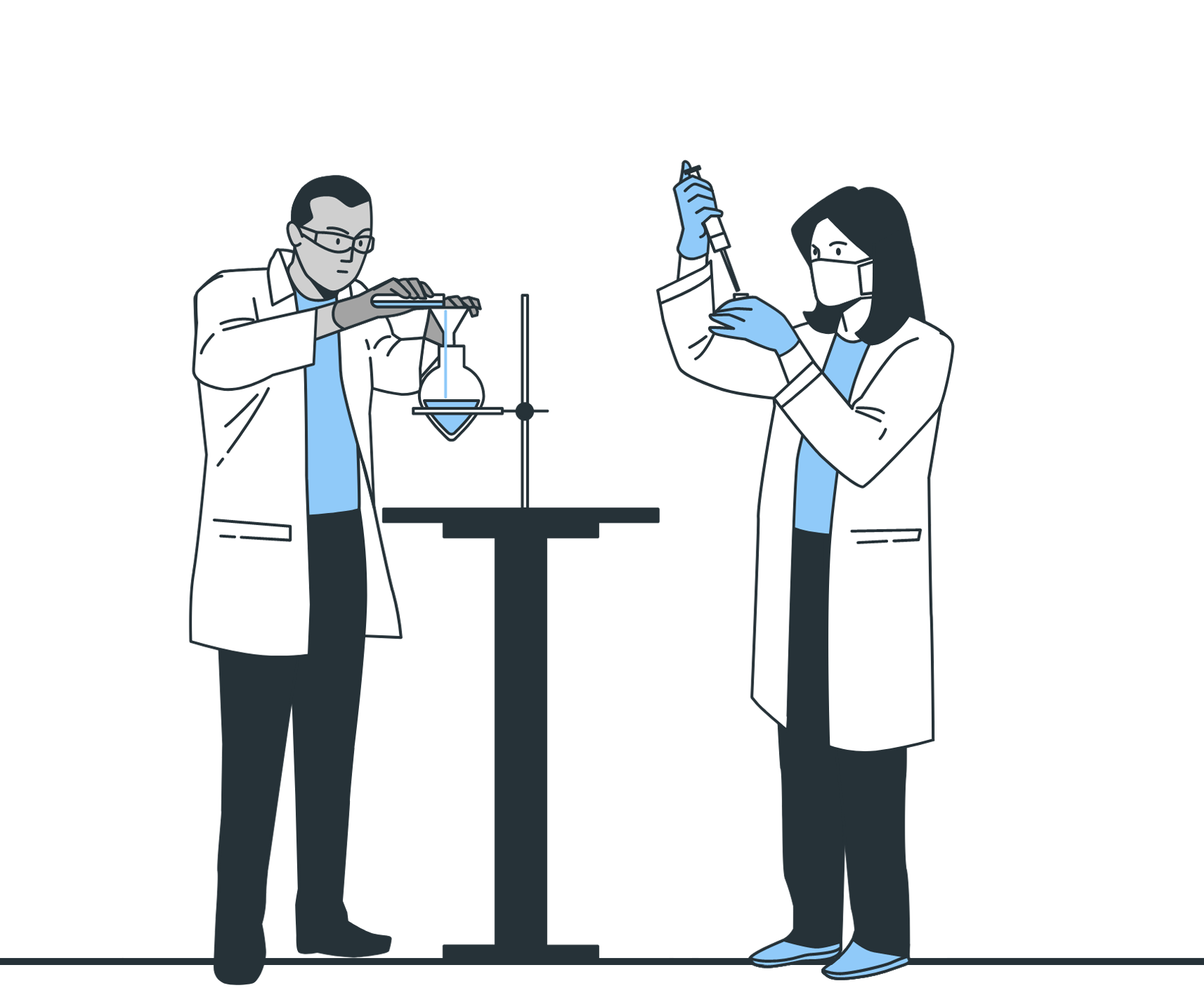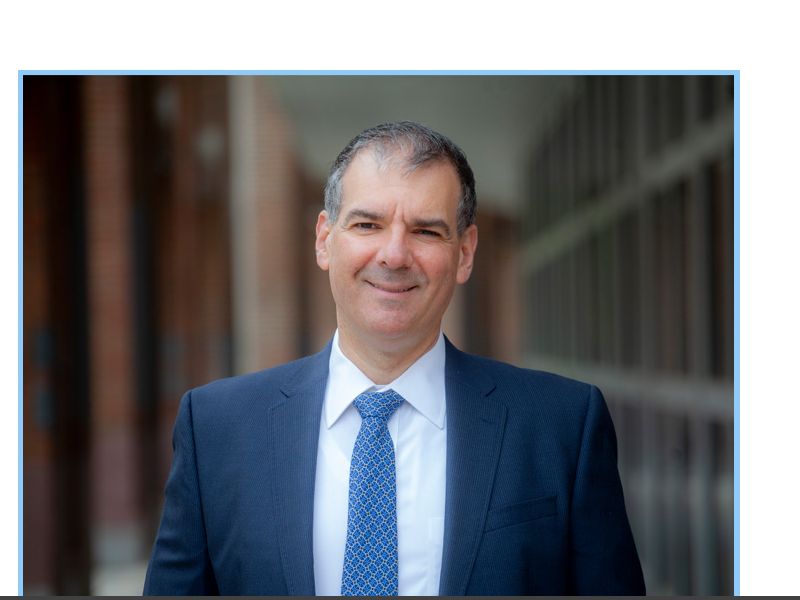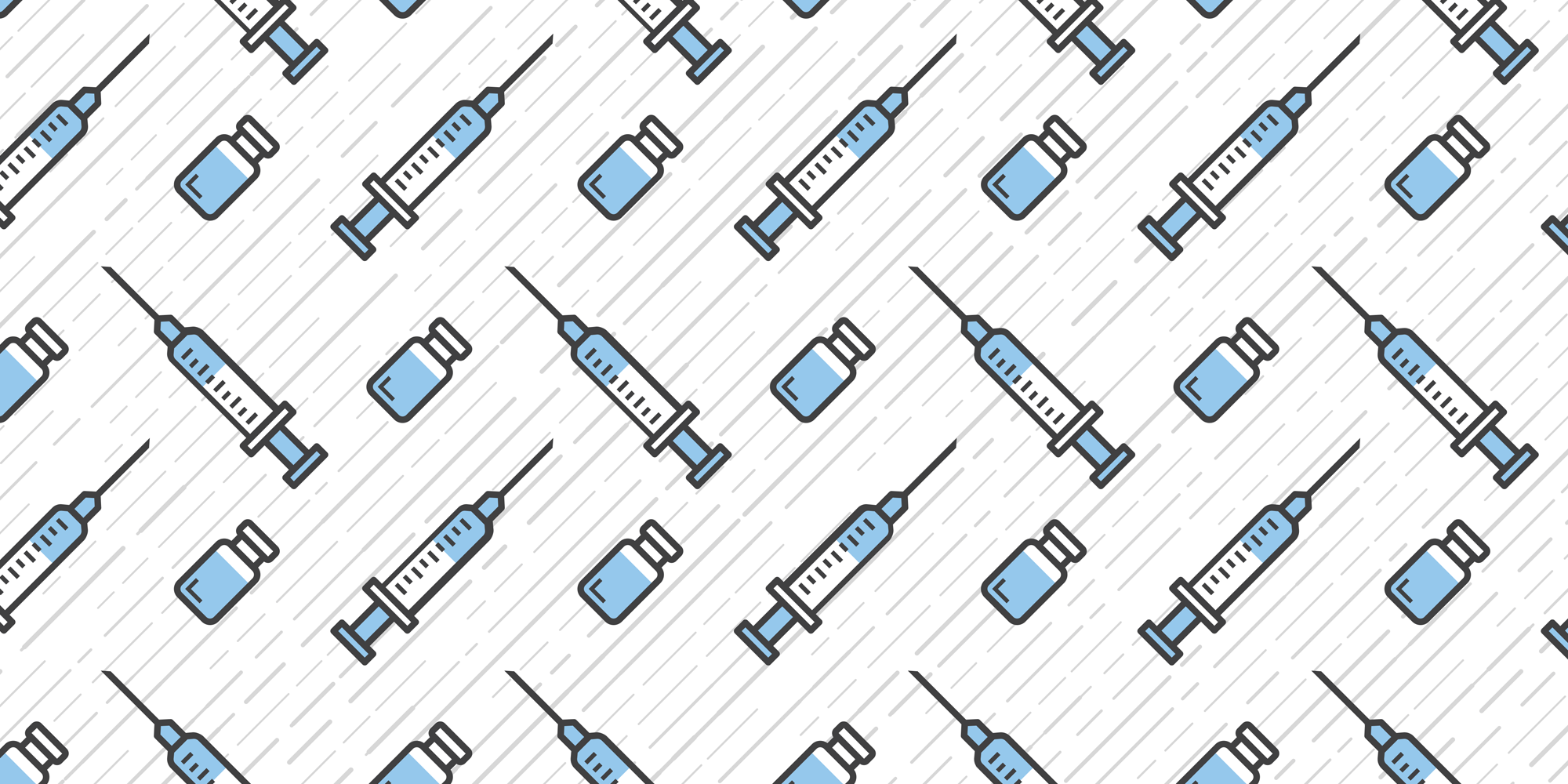On March 31, 2020, Alex Azar D’88, then the Secretary of the Department of Health and Human Services (HHS), was on the phone with the CEO of Johnson & Johnson. Twenty days earlier, the World Health Organization had declared COVID-19 a global pandemic, and an HHS division had hoped J&J would develop a vaccine for the virus.
The proposed contract was business-as-usual for a partnership between the public sector and Big Pharma, where the government would give the company funds to get started (in this case, a 500-million-dollar grant), and J&J would invest the same amount from its own coffers. J&J’s goal was to start phase 1 clinical trials in September, with no guarantees about final pricing or quantities. But for Azar, who had been the president of Eli Lilly U.S. and had previously served as the Deputy Secretary of HHS in the George W. Bush Administration, the deal with J&J lacked the accountability and urgency demanded by the critical global health crisis. “The standard process made us too reactive,” Azar said. “To manage the crisis we had to shift to think about the ecosystem proactively, and that was the genesis of Operation Warp Speed.”
The next day, Azar spoke with members of his leadership team and expressed his frustration with the tentative, lumbering progression towards a solution. The country needed a vaccine as soon as possible; it could not be limited by the traditional processes that led to decade-long lags between drug discovery and distribution. Congress had just passed a two-trillion-dollar COVID-19 relief package and Azar knew that getting the country up and running again would justify an unprecedented investment. He told his team to imagine what was possible if money were no object. “What could physically happen if we put the full weight of the U.S. government behind this?” he asked. Their answer became Operation Warp Speed, an innovative reconfiguration of the entire ecosystem necessary to develop, manufacture, distribute, and administer an effective vaccine.

Photo courtesy National Institutes of Health
“To manage the crisis we had to shift to think about the ecosystem proactively, and that was the genesis of Operation Warp Speed.”
Alex Azar
Secretary Azar visited Tuck this past February to discuss the strategy behind Operation Warp Speed in a fireside chat with Professor Ron Adner. Why? Because a key foundation for the way in which Azar and his senior leadership team approached creating this new ecosystem was anchored in Adner’s approach to ecosystem strategy. Adner, the Nathaniel D’1906 and Martha E. Leverone Memorial Professor of Business Administration at Tuck, is the author of the critically acclaimed book The Wide Lens: What Successful Innovators See That Other Miss, which lays out his novel framework for innovation ecosystems. In it, he defines an ecosystem as “the structure through which partners interact to deliver a value proposition to the end consumer,” and he shows how the difference between great innovations that succeed and great innovations that fail comes down to looking beyond your own firm and execution tasks and expanding your strategy to account for the co-innovators and partners who must come together for your innovation to deliver on its promise.
Adner developed and wrote The Wide Lens at Tuck, where he has taught in the MBA program and for Tuck Executive Education since 2008. His relationship with Azar began long before the pandemic. Azar first invited Adner to Eli Lilly in 2016 to help with the ecosystem strategy for an important product launch. When Azar became the leader of HHS, he again called on Adner to educate his senior leadership team. Adner first visited HHS in the summer of 2018, where he spoke at a leadership retreat and ran breakout sessions for senior members to apply his ecosystem strategy to key initiatives. “At that point,” Azar recalled, “it was about policy transformation, regulatory change, how you think about public policy as an innovation, and how you take the negatives in the adoption chain and convert them into being at least neutral.” By the time Adner went back to HHS in January of 2020, this work had influenced the FDA approach to vaping, the NIH approach to translational science, and the Surgeon General’s approach to the opioid crisis — all problems that crossed boundaries between consumers, public health, and the private sector. “I embedded Ron’s Wide Lens strategy as our way of thinking at HHS from day one,” Azar said, “and it was definitely on our minds as we formed a plan for the COVID-19 vaccine.”
That plan, which was dubbed Operation Warp Speed, began to take shape during April of 2020. With his deep experience in both the pharmaceutical industry and government, Azar was intimately aware of the capabilities each brought to the endeavor, as well as the adoption constraints that would slow down critical collaboration. “Secretary Azar was in a unique position to think through the complexity of this ecosystem,” said Adner. He knew the government needed Big Pharma’s drug development and manufacturing skills, but he also knew about the resources available from across the executive branch, such as the Departments of Defense, Agriculture, Energy, Homeland Security and Veterans Affairs, which could turbocharge the operation. Azar and his team dove into the details of what each participant would need to have in place in order to engage and went about creating the conditions that brought them on board productively. “Starting with a strategy that considers the ecosystem challenges in advance, rather than one that is surprised as each new piece arrives, is the difference between an ambitious vision and an actual achievement,” said Adner. “What this team accomplished was absolutely extraordinary!”

Illustration by Storyset
“Starting with a strategy that considers the ecosystem challenges in advance, rather than one that is surprised as each new piece arrives, is the difference between an ambitious vision and an actual achievement.”
Ron Adner
To unlock the potential of Big Pharma to develop and produce a vaccine by the end of the year, Azar and his team had to de-risk the entire process. “The pharmaceutical industry is called the riskiest business in the world, populated by the most risk-averse people on earth,” Azar said. “It usually takes 10 or 15 years to develop a drug because the industry makes the minimal investment necessary to take the drug from one step to the next to manage its risks.”
A key part of Operation Warp Speed was to accelerate vaccine availability by eliminating the economic and production risks that would drag down the process, while at the same time maintaining the scientific and regulatory requirements that are the hallmark of FDA-approved drugs. Subsidizing the cost of R&D and clinical trials was a key beginning. By June of 2020, the U.S. government had invested billions of dollars in the development of six vaccine candidates across three biologic delivery methodologies (mRNA, adenovirus, and subunit protein) and helped coordinate and facilitate clinical trials across the country, hoping that at least one drug would be found to be both safe and efficacious in combating the COVID-19 virus. By running processes in parallel, recruiting volunteers across communities and across the country, and eliminating delays at every step, Operation Warp Speed resulted in not one, but two, vaccines that qualified for the FDA’s emergency use authorization before the end of the year.
But, in a pandemic, having an approved vaccine only matters if it is actually available to patients. It was here that Operation Warp Speed truly innovated the ecosystem. It may take a 20-liter bioreactor to make 50,000 clinical trial doses; hundreds of millions of doses might require multiple 2000-liter bioreactors—which in the middle of a pandemic-induced supply chain crisis were nearly impossible to acquire. Unique knowledge is required to coax biologics and proteins into usable vaccines in volume. And even if you have enough vaccine produced in a vat, getting it into usable doses, distributed in vials, coupled with needles and syringes is its own story entirely. “This is the beginning of the true ecosystem reconfiguration,” Adner explains.
Through a creative marriage of HHS and the Department of Defense, Azar could avail himself of the Defense Production Act, which was passed in the wake of World War II to leverage the manufacturing might of the U.S. economy to allocate “materials, services, and facilities…to promote the national defense.” In this case, Azar used the Act to facilitate everything from bioreactors to vats, needles, vials, and rubber stoppers, and to direct manufacturers of other goods to produce components for the operation.
Beyond the investment in the vaccines themselves, the government would invest hundreds of millions of dollars to align the private sector actors, from production capacity for glass vial manufacturing, to fill-finish facilities, to the logistics backbone that moved everything across the country and the world. The government took on the role of purchaser and clearing house for the materials, so the pharma companies working on the vaccines wouldn’t be competing against each other for provisions. “The government here is playing this new role in not just helping production but managing coordination,” Adner said, “which is so important because it’s something that money can’t buy.”

Photo by Laura DeCapua
“As a strategy professor in a business school it is inspiring to see how a systematic approach can be extended to the public sector to address the big problems that require big solutions.”
Ron Adner
This unprecedented level of coordination resulted in what Adner calls a modern miracle: within weeks of initial approval, there were tens of millions of doses ready for distribution around the country. That distribution raised a new set of challenges, as vaccine administration was ultimately the purview of the 64 separate health care jurisdictions, spanning states, territories, tribal governments, and cities that together form the U.S. healthcare system. Still, by mid-February of 2021, within eight weeks of first approval, over 50 million vaccine doses had been administered to patients across the country. By mid-June over 180 million patients had been dosed, with over 160 million fully vaccinated, as the public health challenge shifted from administering vaccines to managing vaccine hesitancy.
By March 2022, roughly two years after the virus became a global pandemic, more than 560 million COVID-19 vaccine doses have been administered in the U.S., and hundreds of millions of doses have been donated across the world. Such a timeline would have been impossible without the breakthrough approach to coordination of the public and private sectors. For Adner, COVID-19 is an ecosystem disruption that could only be addressed with an ecosystem solution, and that’s exactly what Azar did with Operation Warp Speed. From the early days of the pandemic, he and his team saw the barriers that needed to be removed and the relationships that needed to be reimagined, and then took the actions required to reconfigure the ecosystem and change the entire game.
As Adner argues in the epilogue to his new book, Winning the Right Game: How to Disrupt, Defend, and Deliver in a Changing World, the boundary-crossing strategy exemplified by Operation Warp Speed will become more and more necessary as societal and business challenges refuse to be siloed. “This is the new state of play,” Adner said. “Climate change is moving the question of environmental care far beyond the purview of the EPA; public healthcare now includes issues like food deserts and environmental determinants of health, which is so much bigger than clinical intervention; the list goes on. As a strategy professor in a business school it is inspiring to see how a systematic approach can be extended to the public sector to address the big problems that require big solutions.”





